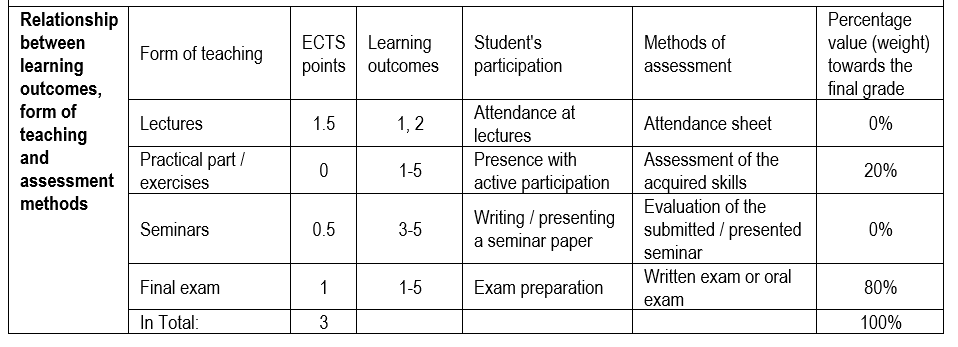In the classes and seminars students learn the terminology, scientific and technological principles and basic technological procedures in order to be qualified to use dental materials in clinical work. They learn about doctrine principles of how to use different dental materials.
Basic properties of dental materials: mechanical (hard, rigid, elastic, plastic, elastic modulus), electrical and electrochemical, warmth (spreading and transmission of warmth) and biocompatibility; fundamental comparative properties of metal, ceramics and plastic materials, their impact in practical use; gypsum: types of gypsum, curing, changes in volume and their impact on the inaccuracy of drainage, on the curing process, on curing accelerators and inhibitors and on the use.
Hard and elastic impression materials: types, composition, curing chemistry, properties and use. Alginates, polysulfides, polyethers and silicones. Condensation and addition silicones, pros and cons and their clinical application. Different types of dental cements: classical dental cement, composite cement and glass ionomer cement, their properties, comparative advantages, use.
Metals: structure and properties of metal; nucleation and crystal lattice; extensibility of metal, hardness, elasticity and plastic deformation, calcination of metal. Dental alloy: composition, preparation, properties, choice of alloy. Refining, mechanical-technological properties and their functional connection. Alloys for denture base, choice, mechanical-technological properties. Alloys for ceramics, choice, mechanical-technological properties.
Ceramics. Precise inlays: basic principles, melting and inlaying, making inlay form, inlay systems, porosity, heat-treated inlay, inlay of dental alloy.
Polymers and the process of polymerisation: initiation, progress and end of the polymerisation process. Thermal, chemical and light polymerisation of polymers, comparative advantages and use. Acrylates: types, methods of polymerisation and impact on mechanical properties, technology of acrylate processing, composition, handling, disadvantages (contraction, water absorption, porosity). Warm and cold polymerisation and their use.
Embedding mass: types, composition and impact of composition on curing and changes in dimension, properties and use. Basics of soldering, traditional and laser-based welding.
Plastic masses in prosthetics: definitions and division, chemistry, polymerisation, addition and condensation polymerisation. Base materials and materials for veneers. Materials for temporary filling of cavity.
Amalgams: composition, properties, curing and use.
Adhesives: generations of adhesives, properties, manner of bonding to enamel and dentine, polymerisation and use.
Composites: composition, properties, polymerisation, contraction, use.
Materials for filling root canals: composition, properties and use.
Materials for dental sealants for fissures and other specific materials in pedodoncy.
Materials for orthodontic work: metals, orthodontic arch wire and other metal elements, acrylates; mechanic demands and choice. Wax: natural and artificial, composition, properties and use. Pumice, polishing agents and other materials that are used in dental prosthetics.
Required course materials:
- Jerolimov V. i sur. Stomatološki materijali. Zagreb: Stomatološki fakultet, 2005.
- Šutalo J. Kompozitni materijali u stomatologiji. Zagreb: Grafički Zavod Hrvatske, 1988.
- Živko J, Jerolimov V. Metali u stomatološkoj protetici. Zagreb: Školska knjiga, 2005.
Supplemental course materials:
- Craig R.G., Powers J.M., Wataha J.C. Dental materials. Properties and manipulation. St. Louis: Mosby Comp., 2000.
- O’Brien W.J. Dental materials and their selection. 2nd Ed. Chicago: Quintessence Publ. Co., Inc., 1997.
- Šutalo J. i sur. Patologija i terapija tvrdih zubnih tkiva. Zagreb: Naklada Zadro, 1994.
- Stamenković D. (ur.). Stomatološki materijali, knjiga 1. Beograd: Stomatološki fakultet, 2009.
Upon completion of this course, students will be able to:
- Describe the basic mechanical, physical, chemical and biological properties of dental materials;
- Describe the correct handling of certain materials, and technological procedures in the dental laboratory in which certain materials are used;
- Properly select and apply material as part of therapy and therapeutic procedure;
- Critically assess the relationship of basic knowledge of dental materials with clinical disciplines;
- Critically evaluate and argue methods and results for individual dental material.



